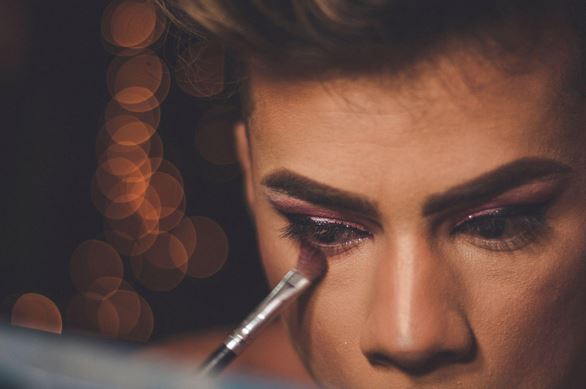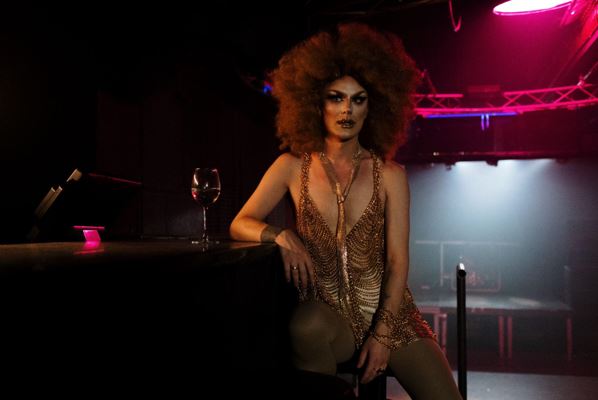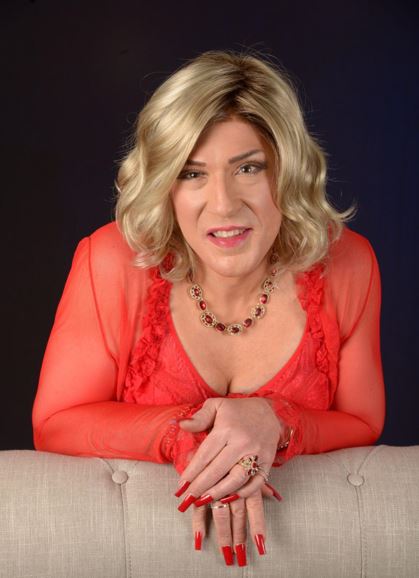
Crossdressing is a topic that has long piqued curiosity and raised questions. Why do individuals engage in this behavior? What motivates them to step into the opposite gender’s clothing? In this article, we delve into the enigma of crossdressing, aiming to shed light on its triggers and provide a deeper understanding of this unique expression of identity. Crossdressing, often misunderstood and stigmatized, can be attributed to a variety of factors, including personal exploration, self-expression, and even escapism. It transcends traditional gender norms and challenges societal expectations, allowing individuals to embrace different aspects of their identity.
While some may view crossdressing as a fetish or sexual expression, it is essential to recognize that it can also serve as a means of empowerment and personal growth. For many individuals, crossdressing provides a safe space to explore and express facets of their identity that remain hidden or repressed in their daily lives. By unraveling the triggers behind crossdressing, we aim to foster a greater acceptance and appreciation of this diverse form of self-expression. Join us as we delve into the fascinating world of crossdressing and uncover the motivations that drive individuals to break free from traditional gender norms.

What is crossdressing and why do people crossdress?
Crossdressing refers to the act of wearing clothing typically associated with the opposite gender. It is important to note that crossdressing is not limited to men dressing as women or vice versa, but encompasses a wide spectrum of gender expressions. People crossdress for various reasons, and these motivations are as diverse as the individuals themselves.
One common reason for crossdressing is personal exploration. By stepping into clothing traditionally associated with a different gender, individuals can gain a new perspective on their own identity. This process allows them to explore and better understand different facets of their personality and expression. It provides an opportunity for self-discovery and a deeper connection to one’s sense of self.
Another motivation for crossdressing is self-expression. Traditional gender norms often restrict individuals from fully expressing themselves. Crossdressing allows people to challenge societal expectations and embrace different aspects of their identity that may not align with their assigned gender. It provides a platform for creative expression and the freedom to present oneself in a way that feels authentic and true.
For some individuals, crossdressing serves as a form of escapism. The act of donning clothing associated with a different gender can offer a temporary respite from the pressures and responsibilities of everyday life. It provides an opportunity to step outside of oneself and immerse in a different persona, allowing for a break from societal expectations and personal stressors.
Triggers and motivations behind crossdressing
The triggers and motivations behind crossdressing are highly individualized. They can stem from a wide range of factors, including personal experiences, cultural influences, and psychological needs. Understanding these triggers can help foster empathy and acceptance for individuals who engage in crossdressing.
One common trigger for crossdressing is a desire for self-empowerment. By embracing aspects of their identity that may be considered unconventional or non-normative, individuals can reclaim their sense of agency and assert their autonomy. Crossdressing can serve as a way to challenge societal expectations and assert one’s own unique identity. In addition, the realm of crossdresser fashion plays a crucial role in this process, as individuals navigate and express their style as part of their self-empowerment journey.
Another trigger for crossdressing is the need for self-expression. For many individuals, traditional gender roles can feel restrictive and limiting. Crossdressing provides an avenue for creative expression and allows individuals to express themselves authentically. It can be a way to communicate one’s innermost thoughts and feelings, often in a manner that words alone cannot capture.

History of Crossdressing
Crossdressing is not a new phenomenon and has a rich history that spans across cultures and time. Throughout history, crossdressing has been present in various forms, serving different purposes and eliciting diverse reactions from society. In ancient civilizations, crossdressing was often intertwined with religious rituals and ceremonies. In some cultures, crossdressing was associated with the worship of deities who embodied both masculine and feminine qualities. These rituals allowed individuals to transcend traditional gender roles and explore different facets of their identity.
During the Renaissance period, crossdressing became a popular form of entertainment in theater and performance art. Female roles were portrayed by male actors, necessitating crossdressing as a theatrical convention. This tradition continued well into the 19th century, highlighting the social acceptance and normalization of crossdressing in certain contexts. The 20th century witnessed significant shifts in societal attitudes towards crossdressing. As gender norms became more rigidly defined, crossdressing became stigmatized and associated with deviance. However, thanks to the efforts of LGBTQ+ activists and increased awareness of gender diversity, crossdressing has gained greater acceptance and recognition as a valid form of self-expression in recent years. In contemporary society, crossdresser fashion has emerged as a distinctive and evolving aspect, showcasing unique styles and trends within the crossdressing community.

Various Types of Crossdressing
Crossdressing encompasses a wide range of expressions and can take many forms. It is important to recognize that there is no one-size-fits-all approach to crossdressing, as individuals engage in this behavior in unique and personal ways. Here are some common types of crossdressing:
- Full-time crossdressing: Some individuals choose to crossdress full-time, adopting the clothing and appearance of the opposite gender in their everyday lives. This may involve adopting a new name, pronouns, and social identity. These individuals aim to explore and embrace diverse facets of their identity, without necessarily seeking a permanent alteration in their physical appearance.
- Part-time crossdressing: Others may engage in crossdressing on a part-time basis, reserving it for specific occasions or private settings. This allows individuals to explore their gender expression while maintaining their assigned gender in other aspects of their lives.
- Drag: Drag is a form of crossdressing that is often associated with performance and entertainment. Drag performers, both male and female, adopt exaggerated gender presentations for the purpose of entertainment and artistic expression.
- Genderqueer and genderfluid: Some individuals identify as genderqueer or genderfluid, meaning their gender identity does not align with the binary categories of male or female. Crossdressing can be a way for these individuals to express their fluid or non-binary gender identity.

Common misconceptions about crossdressing
Crossdressing is often misunderstood, leading to misconceptions and stereotypes. It is important to dispel these misconceptions to foster understanding and acceptance of individuals who engage in crossdressing. One common misconception is that crossdressing is solely a sexual fetish. While crossdressing can be associated with sexual arousal for some individuals, it is not inherently a fetish. For many, crossdressing serves as a means of self-expression and personal exploration, unrelated to sexual desires. Another misconception is that crossdressers wish to change their biological sex. Crossdressing is not indicative of a desire to transition to the opposite gender. It is a form of gender expression that allows individuals to explore and embrace different aspects of their identity without necessarily desiring a permanent change in their physical appearance.
Conclusion
It is crucial to challenge misconceptions and stereotypes surrounding crossdressing, recognizing that it is not solely a fetish or sexual expression, but a legitimate form of self-expression and personal growth. By embracing the diversity of gender expressions, we can create a more inclusive and understanding society that celebrates the richness of human identity.
Are you a crossdresser? Did you find this article helpful? We’d love to know what you think! Email us at[email protected] or message us on our Facebook page. And be sure to check out more great tips and articles on our blog!
